1. “I’ve Fallen and I Can’t Get Up!” – LifeCall

In 1989, LifeCall aired one of the most unforgettable commercials of the decade, featuring an elderly woman lying on the floor and crying out, “I’ve fallen and I can’t get up!” The ad was designed to promote the company’s emergency medical alert system, a device that allowed users to contact help with the press of a button. The dramatic, somewhat comical moment of the woman’s distress, combined with the urgent tone of her plea, struck a chord with viewers. Though some people found the ad a little over-the-top, it became wildly popular, turning the phrase into an instantly recognizable cultural reference. The simplicity of the ad made it memorable: it directly addressed a common fear, the inability to get help in an emergency, and offered a solution in the form of LifeCall’s product.
The commercial’s lasting impact was undeniable, and it became so iconic that parodies and references to the phrase “I’ve fallen and I can’t get up!” appeared in TV shows, movies, and even stand-up routines. Despite the humor, the ad achieved its goal of highlighting a very real problem for older adults and reassuring them that there was a solution. LifeCall’s clever use of humor, while still conveying the seriousness of the product, helped make it a household phrase and raised awareness about personal safety. The campaign was so successful that other companies in the personal emergency response field followed suit with similar ads, but none could replicate the memorable impact of this particular spot. It remains one of the most iconic TV commercials of all time.
2. Where’s the Beef? – Wendy’s
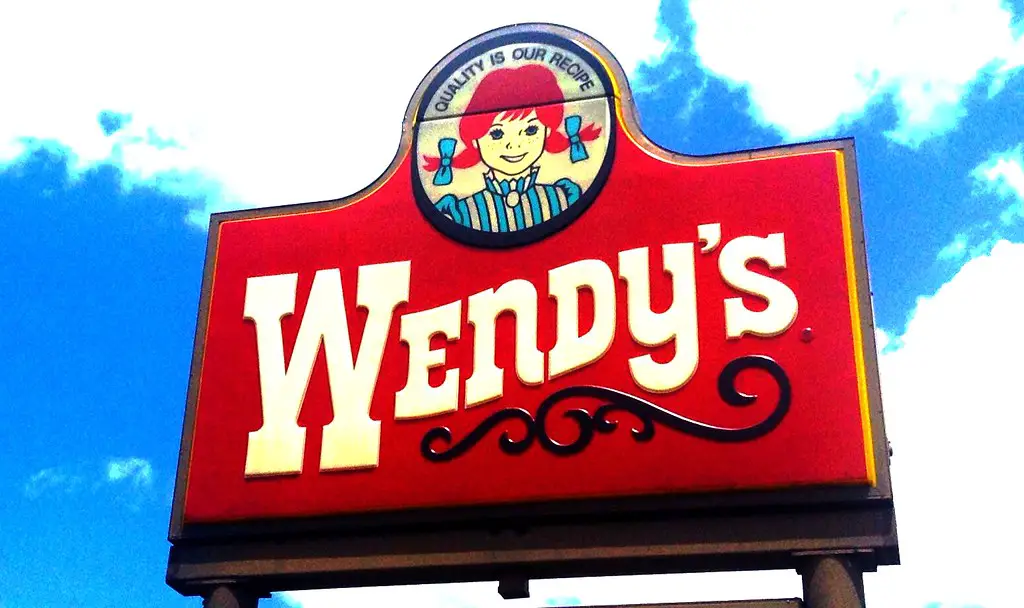
In 1984, Wendy’s aired a commercial that would go down in history, largely thanks to the hilarious catchphrase, “Where’s the beef?” The ad featured three elderly women peering at a competitor’s burger, baffled by its tiny patty. As one of the women, Clara Peller, exclaims, “Where’s the beef?” it became an instant sensation. The phrase quickly entered the national lexicon, with people everywhere adopting it to express dissatisfaction or demand for more substance. The campaign was so successful that Wendy’s saw an increase in sales, and Peller’s role became iconic, cementing the slogan in pop culture. The simplicity of the ad was its brilliance: it used humor and contrast to highlight Wendy’s commitment to offering bigger, better burgers than the competition. What made it even more memorable was how quickly it tapped into the public’s frustration with fast food chains that weren’t delivering on their promises. The humor worked because it was relatable, and the tag line delivered a punchline that resonated with just about everyone says 105.7 WROR.
By 1985, Wendy’s expanded on the success of the campaign, including more TV spots featuring Clara’s catchphrase, further solidifying its place in advertising history. The “Where’s the beef?” slogan became so popular that it made its way into newspapers, talk shows, and even political discourse, as people began using it to criticize anything perceived as lacking substance. Even some of the top competitors in the fast food industry tried to replicate the formula, but none could quite match the magic of the original. The impact of the ad on Wendy’s brand was immeasurable, with the company becoming a household name in a way that few others could match. Ultimately, the ad did more than sell burgers; it sold a mindset of demanding quality and substance, something that was universally appealing. Looking back, it’s clear that “Where’s the beef?” wasn’t just a commercial—it was a cultural moment that defined a decade and helped set the tone for advertising in the years that followed explains Nation’s Restaurant News.
3. The Pepsi Challenge – Pepsi
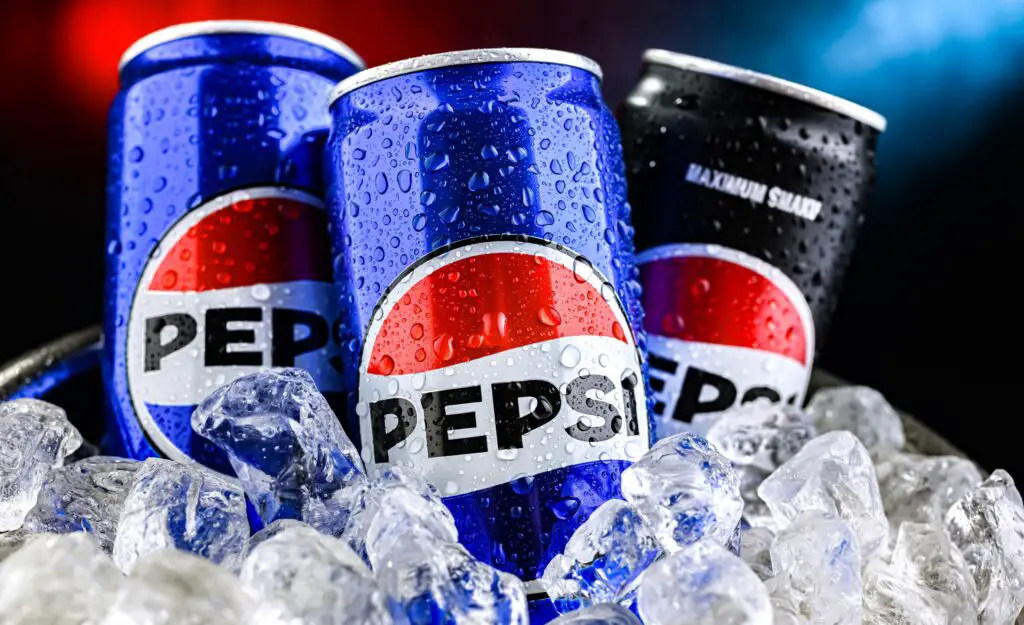
Pepsi’s “Pepsi Challenge” campaign, which first launched in 1975 but gained massive traction in the 1980s, was a simple but effective concept: blind taste tests between Pepsi and Coca-Cola. The commercial featured ordinary people choosing Pepsi over Coke in a side-by-side comparison. There was no flashy marketing or celebrity endorsements—just an honest, unvarnished assessment of the two drinks. This authenticity was key to its success. People loved the idea of taking control and having a say in the decision, rather than being told which brand was superior. The commercial’s candid approach made it feel like a personal challenge to Coke, calling into question the idea that Coke was the “real” choice. As the campaign gained momentum, Pepsi became increasingly associated with being the choice of a younger, more rebellious generation, further differentiating itself from Coca-Cola’s more traditional image according to MSN.
Throughout the 1980s, the Pepsi Challenge went viral, driving both media coverage and public interest. Pepsi took the opportunity to market its product as the beverage of choice for the “cool” crowd, and it was successful in doing so. The campaign was so popular that even Coke had to respond with its own counter-marketing efforts. However, the Pepsi Challenge turned the taste test into a pop culture phenomenon, making it an effective tool in shifting public perception. The commercial and its slogan not only revitalized Pepsi’s sales but also placed it firmly on the map as a serious contender to Coca-Cola’s long-standing dominance in the market. The simple yet profound message that “Pepsi tastes better” was memorable and fun, offering a little rebellion in every sip. The Pepsi Challenge ultimately helped change how brands interacted with consumers and paved the way for more interactive and participatory advertising strategies.
4. “Don’t Leave Home Without It” – American Express
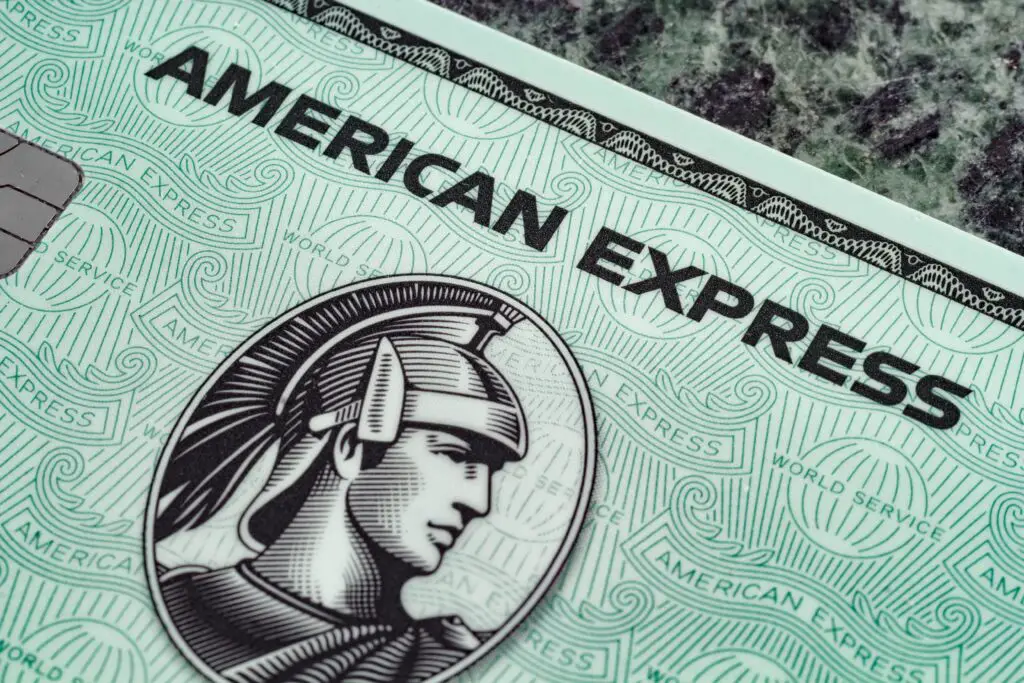
The American Express “Don’t Leave Home Without It” campaign, which began in the late 1970s, became one of the most memorable ad campaigns of the ’80s. It featured well-dressed men and women casually tossing their American Express cards onto bar counters or into their wallets with the tagline, “Don’t leave home without it.” The simplicity of the message made it powerful: American Express wasn’t just a credit card; it was a symbol of wealth, status, and security. People began to associate the brand with travel, luxury, and exclusivity. The campaign was so effective that it turned American Express into a symbol of affluence, appealing to those who wanted to show off their financial success. The slogan itself became ingrained in everyday language, with people quoting it even when they weren’t talking about credit cards adds Screen Rant.
What made the “Don’t Leave Home Without It” campaign so successful was its focus on the lifestyle that came with using an American Express card. The ads didn’t just sell the card—they sold a whole image of sophistication and adventure, making it appealing to a wide range of consumers. By positioning the brand as a must-have for those looking to live their best lives, American Express turned an everyday financial product into an aspirational item. The ads were so effective that they influenced how other financial companies marketed their services in the years to come. Looking back, it’s clear that this campaign was far more than just a commercial; it was an integral part of American Express’s strategy to become a global powerhouse in the financial industry.
5. The California Raisins – California Raisin Advisory Board
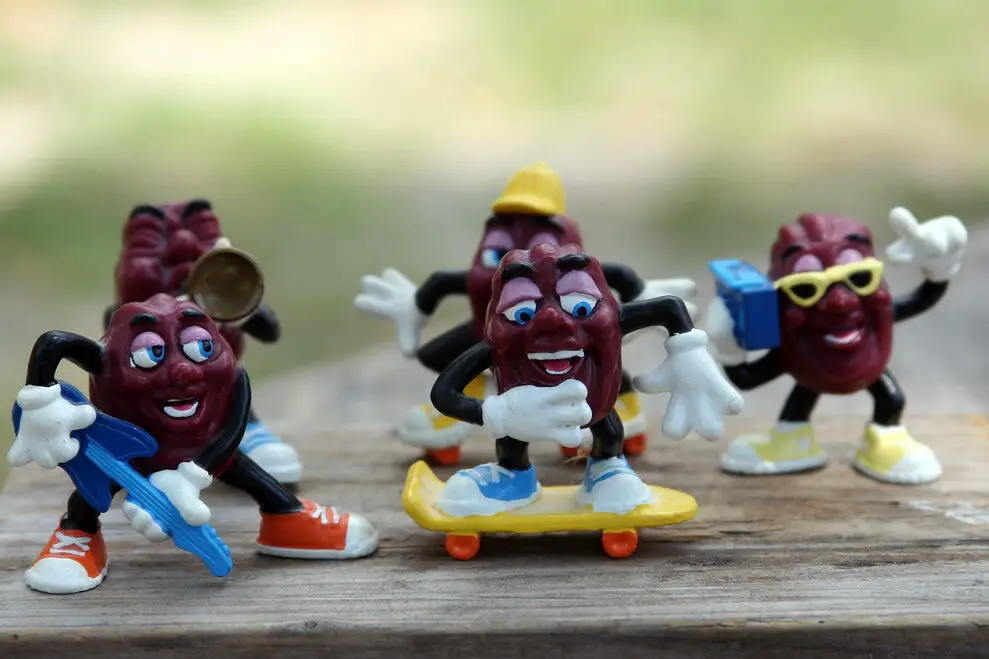
The California Raisins were an unlikely advertising sensation of the 1980s. These animated raisins, with their human-like personalities and love for rhythm and blues, were the stars of a campaign launched by the California Raisin Advisory Board in 1986. The first ad showed the Raisins performing a soulful version of “I Heard It Through the Grapevine,” and it instantly captured the public’s imagination. The unique concept of using claymation to bring these raisin characters to life gave the commercials a quirky, fun vibe that set them apart from other ads at the time. The California Raisins were immediately embraced by audiences for their humor, creativity, and unforgettable music.
As the campaign grew, the Raisins expanded from TV spots to toys, merchandise, and even their own Saturday morning cartoon show. The California Raisins became a pop culture phenomenon, with their catchy songs and distinct look. It was one of the few ad campaigns that transcended its original product, turning raisins into a symbol of fun and coolness. The clever blend of music, animation, and humor made the campaign a huge hit with children and adults alike. The Raisins even performed at the Super Bowl, cementing their status as 1980s icons. Though their popularity eventually waned, the California Raisins remain one of the most memorable advertising creations of the era. The campaign’s lasting success is a testament to the power of creativity in advertising and the unexpected ways in which a brand can connect with its audience.
6. “This Is Your Brain on Drugs” – Partnership for a Drug-Free America

In 1987, the Partnership for a Drug-Free America launched one of the most impactful anti-drug ads of all time. The commercial, which featured an egg being cracked into a hot frying pan with the voiceover, “This is your brain. This is your brain on drugs,” left an indelible mark on anyone who saw it. The simple yet powerful imagery of an egg frying was stark and memorable, making the consequences of drug use immediately clear. The ad was part of a broader campaign designed to educate young people about the dangers of drugs, and it was both effective and widely discussed. The image of the frying egg became a symbol of the campaign, instantly recognizable to anyone who had seen the ad.
The campaign became so famous that the phrase “This is your brain on drugs” entered the public lexicon, and it was quoted often by both those in favor of and against the anti-drug message. Critics of the ad argued that it oversimplified the issue, but its impact on public awareness was undeniable. The commercial was part of a larger movement to educate teenagers and young adults about the risks of drug use, particularly crack cocaine, which was a major concern during the 1980s. Though the ad’s direct approach and simple imagery sparked debate, its effectiveness in getting people to think about drug use was undeniable. The campaign continues to be remembered as one of the most iconic public service announcements ever produced.
7. “The Most Interesting Man in the World” – Dos Equis
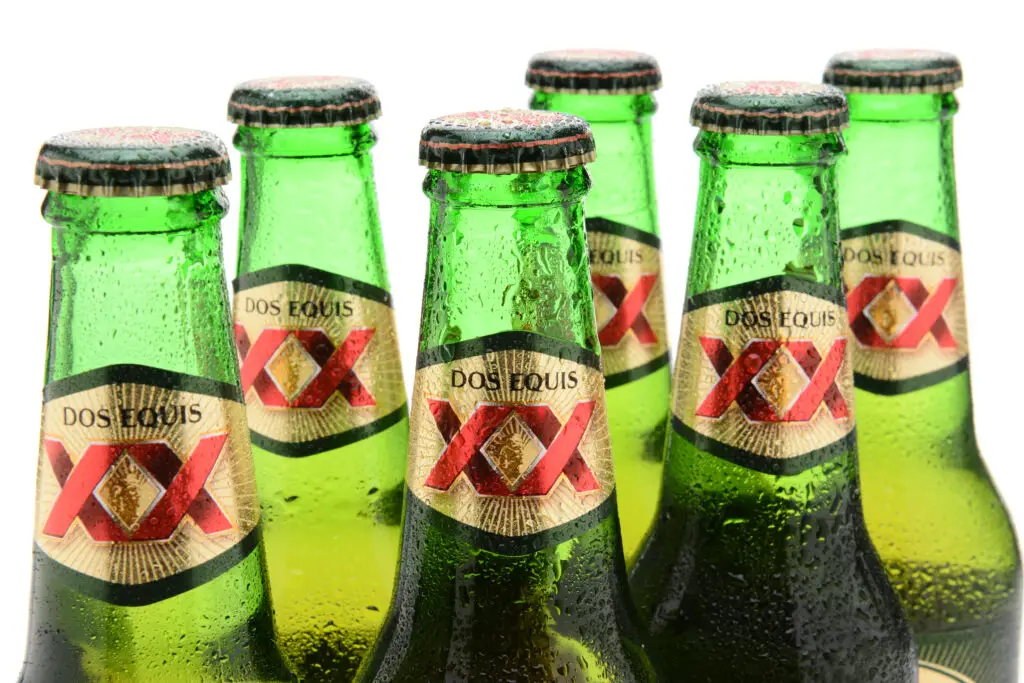
Though this campaign launched in the early 2000s, the groundwork for its success was laid in the 1980s when Dos Equis first started rebranding itself as a fun, premium beer. The eventual creation of the “Most Interesting Man in the World” in 2006 took everything that the beer had been hinting at for years and turned it into a cultural touchstone. The commercials depicted a suave, impossibly charismatic man who lived an extraordinary life, with each ad featuring his many, exaggerated accomplishments. The tagline, “Stay thirsty, my friends,” became as iconic as the character himself, with the suave and witty persona of the lead actor, Jonathan Goldsmith, captivating audiences worldwide.
While the campaign didn’t officially begin until the 2000s, it was heavily inspired by the branding efforts of the ’80s, which focused on positioning Dos Equis as a beer for adventurous and worldly individuals. The original ads worked to differentiate Dos Equis from its competitors, promoting the idea that if you were a true beer connoisseur, you would opt for this premium brew. The brand’s clever combination of humor and sophistication made it an instant hit, and the “Most Interesting Man in the World” became a meme-worthy icon. Even though the campaign wasn’t officially part of the ’80s, its roots in that decade’s branding efforts helped lay the foundation for its success. It shows just how powerful advertising can be when it taps into something both unique and relatable at the same time.
8. “Don’t Mess with Texas” – Texas Department of Transportation
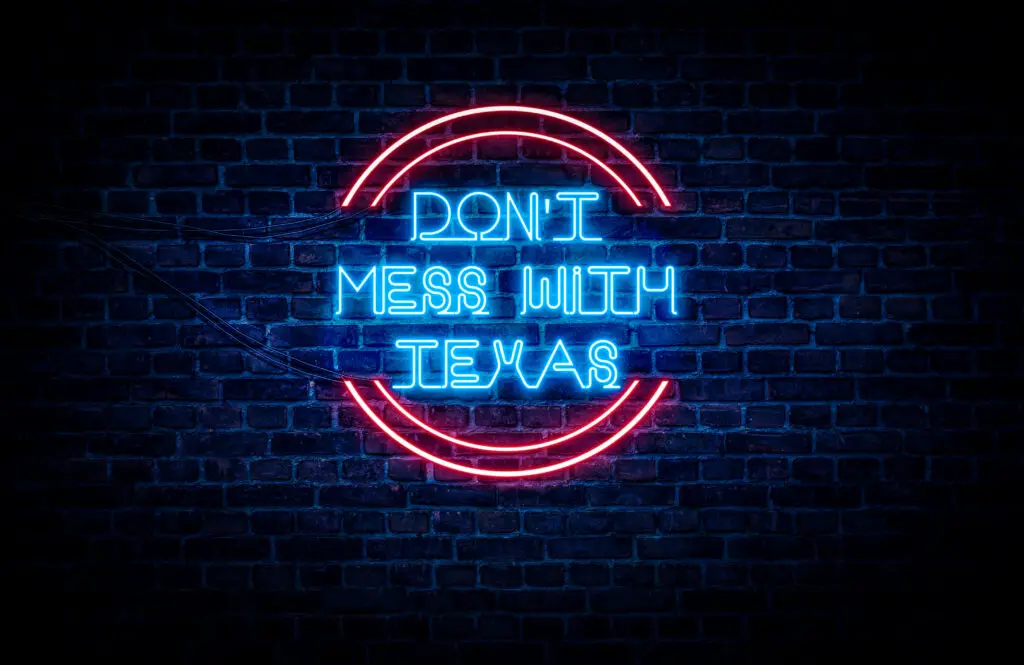
In 1986, the Texas Department of Transportation launched the “Don’t Mess with Texas” campaign to reduce littering along the state’s highways. The slogan was a catchy, no-nonsense way to tell Texans to take pride in their state and keep it clean. The campaign was also aimed at addressing a serious environmental issue—littering—and it quickly gained traction across the state. The phrase itself became synonymous with Texas pride, as it was a direct reflection of the state’s bold, independent spirit. The campaign’s combination of humor, pride, and straightforwardness made it incredibly effective, and it became a defining phrase of the ’80s in the state.
By the late ’80s, “Don’t Mess with Texas” had transcended its original purpose and became part of the Texas identity. It showed that a state can come together around a simple but effective message. The campaign also helped foster a sense of collective responsibility, where everyone in Texas could feel like they were part of something bigger than just a litter control initiative. The slogan became so iconic that it was adopted in all kinds of contexts, from bumper stickers to T-shirts, and it even found its way into pop culture references. In the years that followed, the campaign was expanded and still resonates today as one of the most successful public service announcements in history. It’s a perfect example of how a simple, strong message can make an enduring impact on a culture.
9. “Mikey Likes It” – Life Cereal
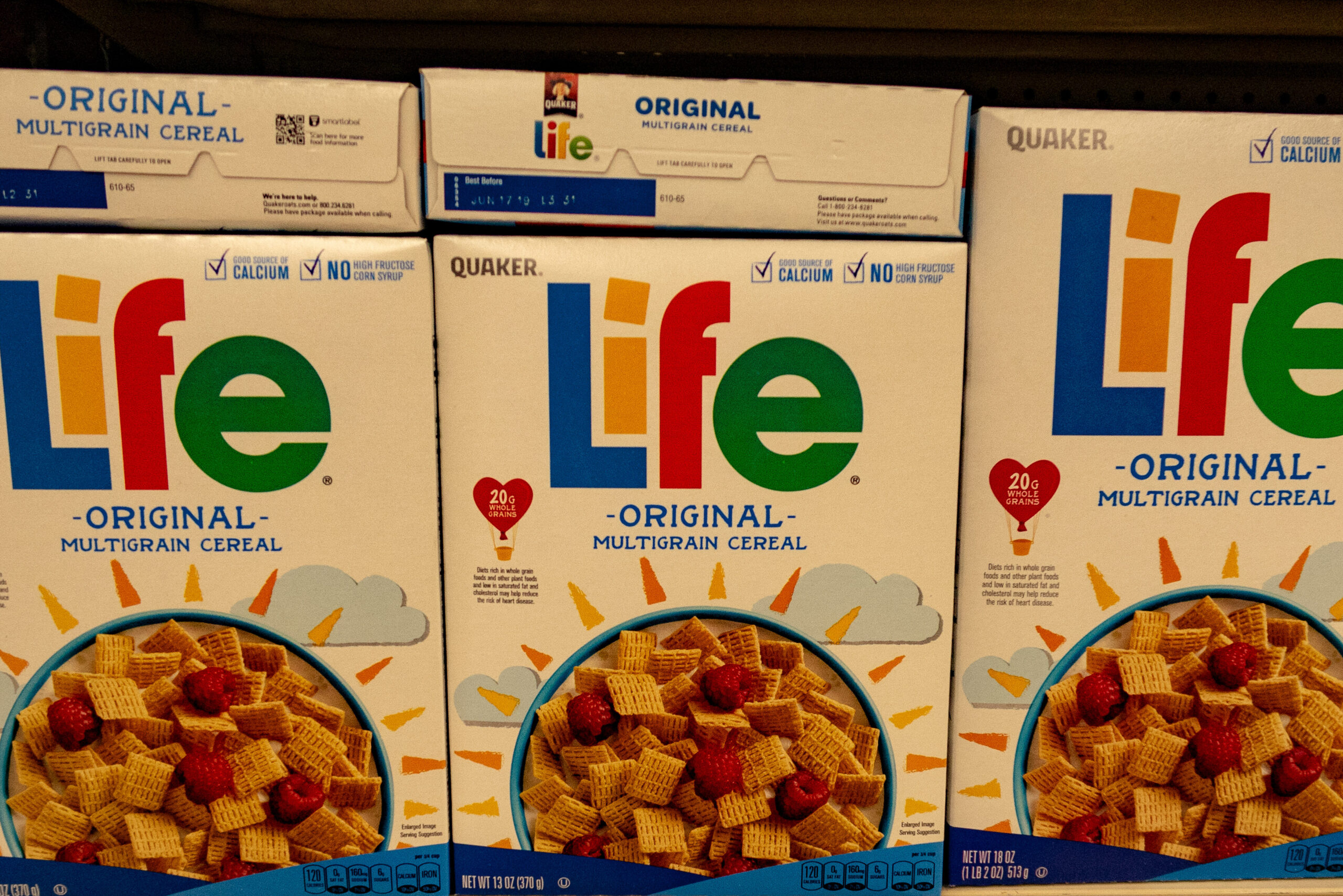
The Life Cereal commercial, first airing in 1972 but remaining influential throughout the 1980s, featured a young boy named Mikey who refused to try new foods. His siblings, trying to get him to eat Life cereal, were surprised when he finally tasted it and enthusiastically said, “He likes it! Hey, Mikey!” This ad quickly became a classic, as it tapped into the universal childhood experience of trying to convince a picky eater to try something new. The commercial’s catchy tagline and Mikey’s exaggerated expression made it a hit, and it turned into one of the most iconic ads of the 1980s.
Mikey’s initial reluctance and ultimate approval of the cereal resonated with parents everywhere, who often found themselves in similar battles with their own children over food. The ad was simple but highly effective in conveying the message that Life cereal was a great choice for kids, even those who were picky eaters. The campaign not only made the cereal a household name but also made Mikey a pop culture icon. “Mikey likes it!” became a widely used expression, and people could often be heard saying it in everyday conversations. The Life Cereal commercial remains one of the most memorable and beloved ads from the 1980s, and its influence on advertising is still felt today.
10. “It’s Not TV. It’s HBO.” – HBO
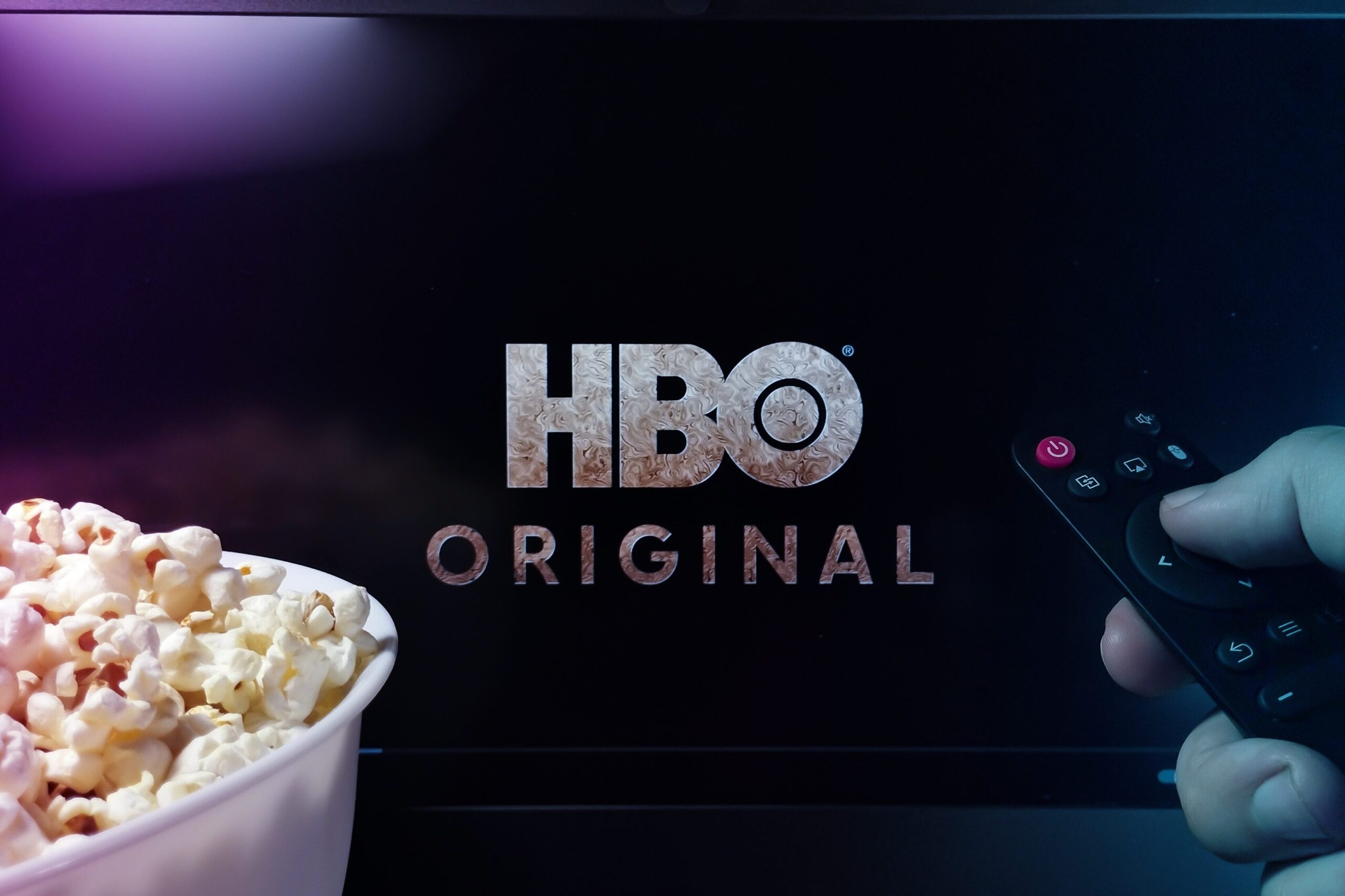
HBO’s campaign in the late 1980s with the tagline “It’s Not TV. It’s HBO.” became a game-changer for the cable television industry. It was a bold statement that distinguished the premium channel from its competitors, showcasing HBO as a brand that offered more than just standard television programming. The commercials highlighted the exclusive, uncensored, and high-quality content available only on HBO, setting the network apart from basic cable. The campaign’s success helped HBO define its identity as the go-to place for cutting-edge entertainment, from movies to original programming.
The phrase became so synonymous with HBO that it was quickly adopted into everyday conversation. It implied that HBO wasn’t just another channel—it was a premium experience. The ad’s effectiveness was apparent as HBO’s subscriber base grew dramatically, thanks to its reputation for delivering high-quality, often provocative programming that couldn’t be found anywhere else. The tagline not only helped elevate HBO’s profile but also raised the standard for what audiences could expect from television, making it a major force in the entertainment industry. HBO’s savvy use of advertising and branding turned it into a powerhouse, and “It’s Not TV. It’s HBO.” remains one of the most iconic advertising slogans in TV history.
11. “Coke Is It!” – Coca-Cola
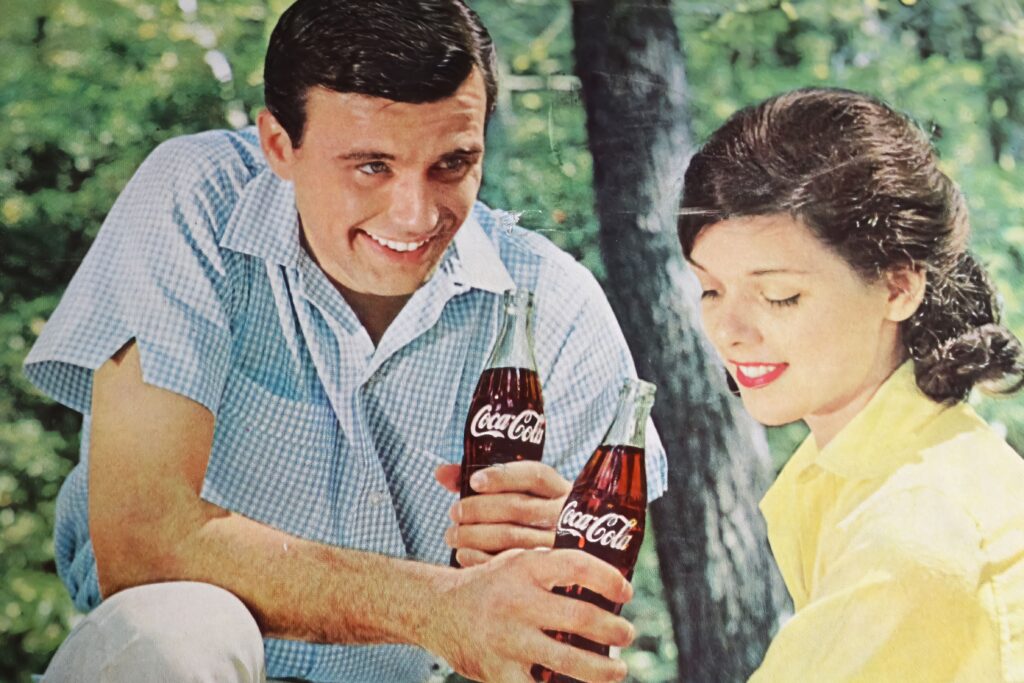
In 1982, Coca-Cola introduced the “Coke Is It!” slogan, which was a fresh, energetic push to reinforce the idea that Coke was more than just a soft drink—it was a way of life. The campaign emphasized the brand’s deep connection to fun, adventure, and modern culture. The upbeat commercials, which featured people enjoying Coke in various exciting settings, reflected the vibrant, youthful energy that defined the 1980s. “Coke Is It!” became the anthem of a generation, with the slogan embodying the idea that if you were drinking Coke, you were part of something bigger, something iconic.
The ads featured an eclectic mix of music, celebrities, and high-energy moments that appealed to people of all ages. Coca-Cola had long been an established name, but the “Coke Is It!” campaign marked a major shift in its approach to advertising, focusing on the emotional connection consumers had with the brand. The catchphrase was a celebration of the positive moments in life—whether it was hanging out with friends, enjoying a meal, or just taking a break. The campaign was so effective that it helped Coca-Cola maintain its dominance in the soda industry.
12. “Milk. It Does a Body Good.” – American Dairy Association

Launched in 1984, the “Milk. It Does a Body Good.” campaign quickly became one of the most memorable and influential marketing initiatives of the decade. The commercial featured a diverse array of athletes, actors, and public figures, all endorsing the health benefits of drinking milk. The simple yet impactful message was clear: milk was essential for a strong, healthy body. The campaign played into the growing fitness trend of the ’80s, aligning milk with physical well-being, strength, and vitality. It showcased individuals of all ages—children, teens, and adults—demonstrating how milk supported their active lifestyles. From Olympic athletes to everyday people, everyone was portrayed as benefiting from drinking milk, which helped elevate the product beyond just a household staple to something that could fuel performance and health.
The ads were successful not only because of their positive, aspirational message but also because they tapped into the rising awareness about the importance of calcium and strong bones. The campaign’s catchy, easy-to-remember slogan made it one of the most effective food-related campaigns of the era. “Milk. It Does a Body Good.” became an essential part of American culture in the 1980s and beyond, influencing how people viewed milk and dairy products. In addition to promoting milk’s nutritional value, the campaign helped reshape perceptions of dairy as a beverage suitable for people of all ages, not just for children. It encouraged families to make milk a consistent part of their diets, helping to boost milk consumption across the United States. Even today, the slogan remains one of the most iconic in advertising history, reminding people of the longstanding connection between health and dairy.
13. “I Can’t Believe I Ate the Whole Thing” – Alka-Seltzer
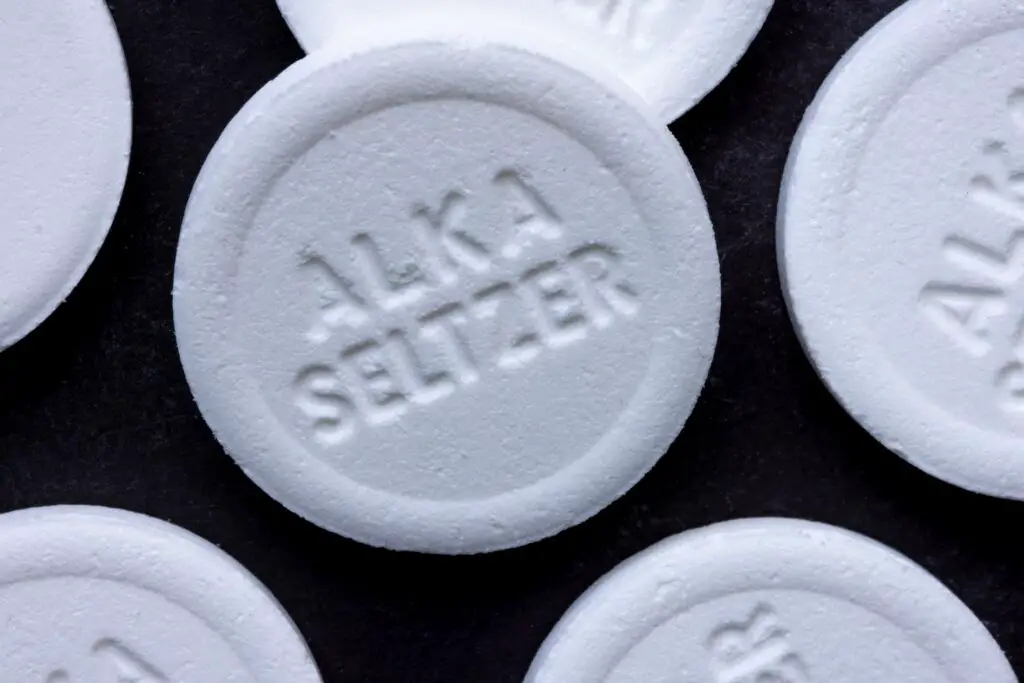
Alka-Seltzer’s 1970s commercial “I Can’t Believe I Ate the Whole Thing” remained a major influence throughout the 1980s. The ad featured a man lamenting the consequences of overeating, saying, “I can’t believe I ate the whole thing,” after consuming an enormous meal. The humorous portrayal of a common problem—overindulgence—struck a chord with viewers. It captured that universal feeling of regret after overdoing it at the dinner table, and Alka-Seltzer positioned itself as the ultimate solution to ease discomfort. The ad’s memorable line became so popular that it found its way into everyday conversation. People were often heard joking about their own overeating habits with the phrase, and it became an enduring part of pop culture.
The effectiveness of the commercial lay in its relatability—everyone could identify with that feeling of eating too much and needing some relief. It also cleverly demonstrated the product’s ability to quickly alleviate discomfort, making it the go-to remedy for indigestion. The ad’s success helped Alka-Seltzer establish itself as a trusted brand for digestive issues. The phrase “I can’t believe I ate the whole thing” became iconic, even though it was never meant to be taken too seriously. It was one of those rare moments when a catchy, simple line completely encapsulated the essence of the product and resonated with millions of consumers. The campaign not only boosted sales for Alka-Seltzer but also became a defining feature of its marketing efforts throughout the decade.
14. “The Ultimate Driving Machine” – BMW
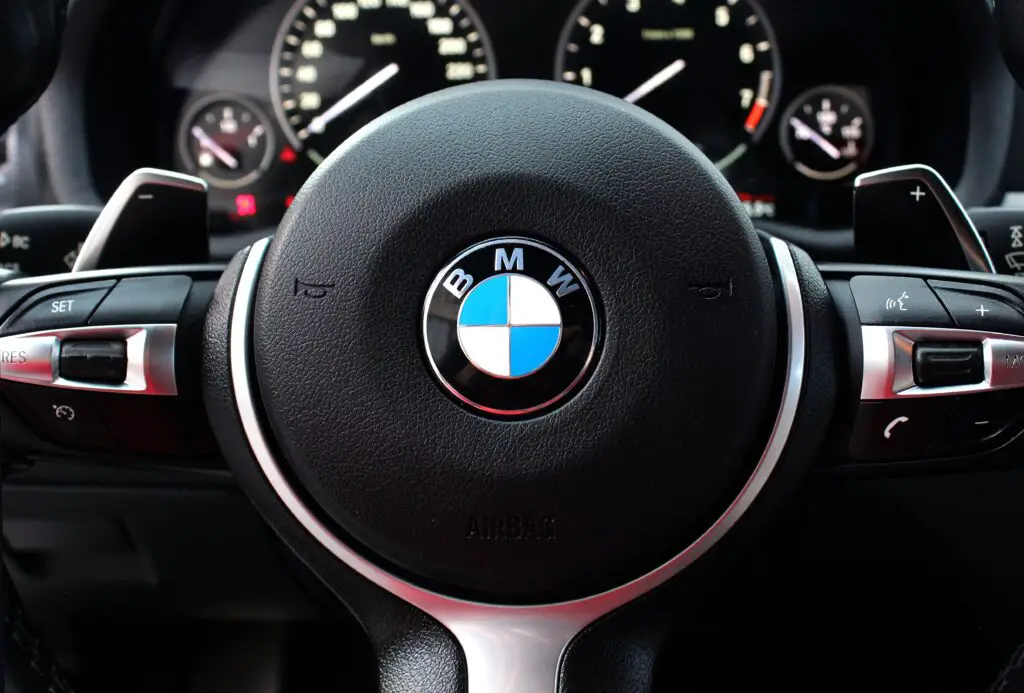
BMW’s “The Ultimate Driving Machine” slogan, which was first introduced in the late 1970s, became synonymous with the brand throughout the 1980s. The campaign was designed to position BMW as a high-performance, luxury car manufacturer that provided more than just transportation—it offered an unparalleled driving experience. The ads emphasized the precision engineering, sleek design, and thrill of driving a BMW. With each commercial, BMW presented its vehicles as not only practical but also aspirational, appealing to the sophisticated consumer who craved luxury and performance. The “Ultimate Driving Machine” slogan highlighted BMW’s commitment to excellence in every aspect of the driving experience, from handling to comfort.
The brilliance of the campaign lay in its ability to resonate with consumers who valued both performance and style. BMW used sleek visuals, showcasing their cars in motion against scenic backdrops, to reinforce their message. The focus was always on how the car felt on the road, making the experience of driving feel exhilarating. By the mid-1980s, the slogan was so closely associated with BMW that it became a hallmark of the brand, setting it apart from its competitors in the luxury car market. The campaign helped elevate BMW’s reputation, transforming it from a niche brand into one of the most recognized and respected names in the automobile industry. The “Ultimate Driving Machine” slogan continues to be a defining element of BMW’s marketing strategy today.
15. “Crispy, Crunchy, Peanut Butter, Peanut Butter, Crispy” – Reese’s Peanut Butter Cups
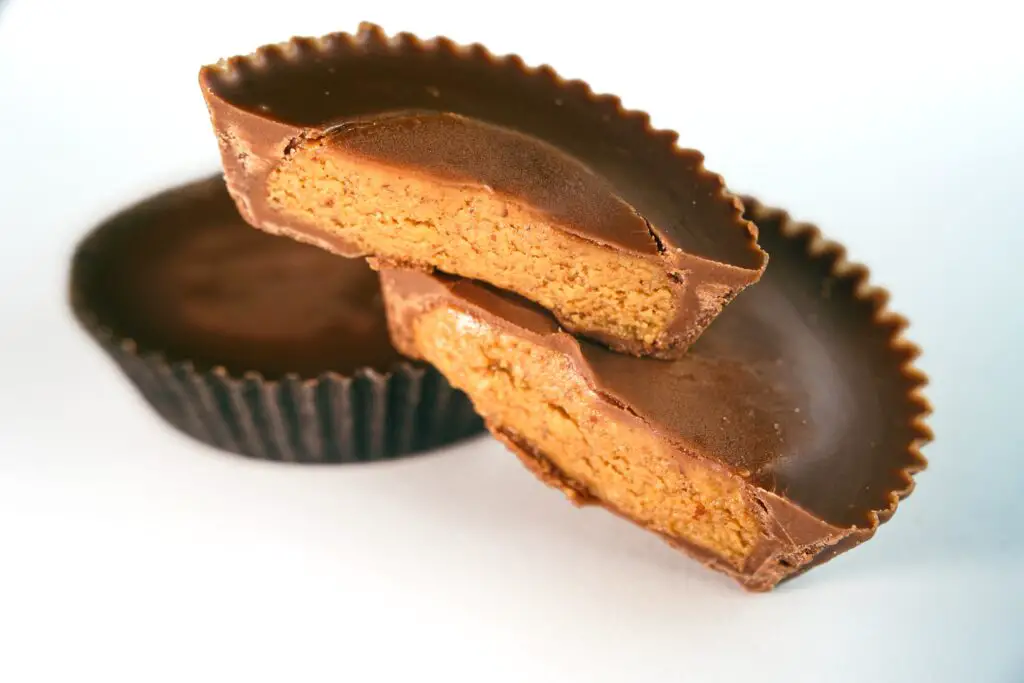
Reese’s Peanut Butter Cups revolutionized candy marketing in the ’80s with the introduction of their “Crispy, Crunchy, Peanut Butter, Peanut Butter, Crispy” campaign. The catchy, fast-paced jingle highlighted the unique combination of creamy peanut butter and crispy elements that set Reese’s apart from other candy bars. The commercial featured animated, colorful visuals and a playful tune, making it both fun and unforgettable. The rhythmic nature of the jingle made it stick in viewers’ minds, and it became almost impossible to hear it without thinking of the candy itself. Reese’s used this campaign to position its product as the ultimate indulgence for those who loved both peanut butter and a little crunch.
The jingle was so successful that it became part of pop culture, and even people who didn’t eat Reese’s regularly found themselves humming it. The campaign’s catchy music, combined with the appeal of the product’s distinct flavor, helped solidify Reese’s Peanut Butter Cups as one of the top candy brands of the decade. Over the years, the jingle evolved and became even more ingrained in the public’s mind. Reese’s continued to use the “Crispy, Crunchy” theme in various ads, ensuring that it remained a cornerstone of their marketing efforts. It wasn’t just about the candy; it was about creating a brand experience that was fun, memorable, and impossible to forget. The campaign’s success helped Reese’s maintain its dominance in the candy market and made the brand a household name.
